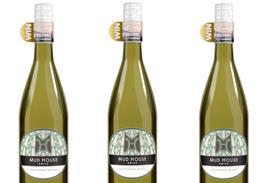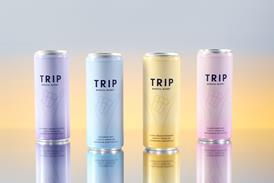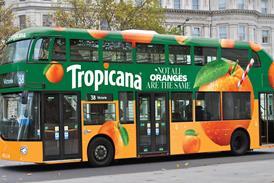Wholesalers have repeatedly called on the Office of Fair Trading to act on the huge buying power deficit they suffer in comparison to the superstore giants. David Rees reports
This week Tesco announced yet another spectacular set of results, with an annual profit of £2bn to go with its market share of more than 30%. Yet at the same time it claims to be the cheapest supermarket in the country, and this has put its buying power once again in the spotlight.
Tesco has the logistics and IT to make it a world-class retailer in terms of efficiency, but you cannot get to the position of £2bn profits and cheap prices without exerting a lot of pressure when you buy your goods. When the Competition Commission audited the major supermarkets in 2000, it found Tesco enjoyed an 11% advantage in cost terms for suppliers’ top five product lines, compared to the mid-sized or regional multiples such as Budgens.
Since 2000, Tesco’s market share has climbed even higher and the company has built up a substantial chain of Express convenience stores. Despite this, the OFT recently ruled that the market remains competitive and that no further study is necessary at this time - a decision that has angered and frustrated many in the trade.
HUGE BUYING ADVANTAGE
The Federation of Wholesale Distributors has repeatedly said that the huge buying advantage that Tesco and other multiple retailers enjoy has grave consequences for the rest of the market. So much so that the Federation’s members offered to open up their books to the OFT so the disparities could be quantified. FWD director general John Murphy said: “There is plenty of evidence that there are price differentials - and these have been reported not just by wholesalers but by suppliers as well.
“We recognise there are huge volumes involved with the superstore companies, so we’re not saying the price should always be the same, but if you are buying an entire trunker of stock there should at least be some proportionality of price regardless of who is buying it. We are concerned that there are some hugely disproportionate deals going on.”
To date, the OFT has turned down the FWD’s offer twice. Murphy said: “What we are proposing is, as the OFT already looks at the paperwork for deals the multiple grocers do, why not compare them to similar deals in the wholesale sector? The first time we made the offer we were told it was too late in the day and that the investigation was virtually over. When the OFT extended its review of the supermarket code to include wider issues we repeated the offer - and it was turned down again.”
At the heart of the matter is the much-criticised ‘two market’ view, whereby growth in the c-store sector is viewed as a separate issue by the competition authorities to growth in the supermarket sector.
Murphy continued: “We are trying to get the authorities to recognise that the changes that are happening in the c-store sector are because of the skewed nature of the market in general. The grocery market is one market from a buying point of view. When Tesco buys, it buys for its entire estate and is making a huge profit on what is perceived to be cheap food. This gives it more money to invest, meaning Tesco can increase its share of the convenience store market in a way that independent operators cannot because of the price constraints.”
In Murphy’s view, a comparison of the buying prices obtained by multiple grocers and wholesalers will provide what the competition authorities have always said they are looking for - proof that suppliers are getting squeezed by the multiples. And here lies another problem for the independent trade: If suppliers’ profitability is squeezed in one direction by powerful multiple retailers, there is a danger they will overcharge weaker customers to compensate.
This so-called ‘waterbed effect’ was referred to by the Competition Commission in its 2000 report on the supermarkets, as well as during the more recent Morrison takeover of Safeway.
FORCED TO SPECULATE
The effect was also considered in a report by think-tank Europe Economics last year, which concluded that while suppliers do not necessarily react in this way to pressure in the short-term, in the long-term the waterbed effect makes it harder for new retailers in the grocery trade and possibly restricts new product investment by suppliers. The report was sent to the OFT by the Association of Convenience Stores in a bid to trigger a full market review - another invitation the Office declined.
ACS public affairs manager James Lowman said: “Without any transparency in the buying process, we are all forced to speculate. We don’t know what the multiples really buy for, or what sort of secondary benefits they receive in advertising allowances, bonuses or category management payments.
“The small store sector has potentially a great advantage in that it can sell manufacturers’ products through more outlets than the grocery multiples, but it won’t be able to do this effectively if it can’t offer a competitive retail price.”
Rodney Hunt, managing director of wholesale consortium The Today’s Group, points out that the uneven playing field is more marked in some categories than in others.
He said: “The big differentials occur much more in grocery than in alcohol, with impulse lines somewhere in the middle. For groceries, 85% of the market is in the multiples but for beer the figure is more like 50%.” As a result, the independent trade struggles to obtain good terms in the grocery sector but is very competitive in the beer market. Even though the multiples run aggressive promotions at certain times of year, such as at Christmas and during major football tournaments, Hunt points out that independent stores are often the cheapest places for consumers to buy beer.
He continued: “The brewers have recognised it’s not in their interests to have one small group of all-powerful customers and they have maintained a balance between their customers through their pricing structure.” Some grocery suppliers, said Hunt, “capitulated” to the multiples’ demands and then tried to claw back lost margin through the independent trade.
“Some manufacturers have a love affair with the multiples and don’t believe in the independent sector. This just compounds the problem. Some of the differentials are mind-blowing.”
Recently, Hunt pointed out, some of the major grocery manufacturers such as Heinz, Kellogg’s and Nestlé have tried to rectify the problem by providing the independent trade with flash packs marked with retail prices similar to the multiples’. He said: “We welcome that investment by manufacturers. These packs have been well supported by retailers, and consumers like them as it gives them confidence they’re not being ripped off. As long as everyone is prepared to work on the margins available, we will encourage suppliers to help independent retailers get as near as possible to the price offered by the multiples.”
While many retailers support the flash pack option, others have voted with their feet and headed for the superstores. Figures from HIM’s latest Cash & Carry Customer Tracking Programme show that one in four retail customers at the UK’s leading cash & carries also buys goods from supermarkets for resale in their own stores.
‘FRUITFUL PICKINGS’
Typically, independent retailers buy goods from supermarkets twice a month, so the superstore sector has become a regular source of supply for many independents. HIM’s chief executive Tom Fender said: “Availability is the biggest reason why retailers fail to buy an intended item on a cash and carry shopping trip, so this could be a factor driving retailers to supermarkets, but price would definitely be a contributor. We know that retailers love chasing deals, so supermarkets are just another source of fruitful pickings.”
But if it means that independent retailers now have to boost the profits of their multiple competitors in order to maintain their own, then it seems there will be no imminent shift in the balance of power.
This week Tesco announced yet another spectacular set of results, with an annual profit of £2bn to go with its market share of more than 30%. Yet at the same time it claims to be the cheapest supermarket in the country, and this has put its buying power once again in the spotlight.
Tesco has the logistics and IT to make it a world-class retailer in terms of efficiency, but you cannot get to the position of £2bn profits and cheap prices without exerting a lot of pressure when you buy your goods. When the Competition Commission audited the major supermarkets in 2000, it found Tesco enjoyed an 11% advantage in cost terms for suppliers’ top five product lines, compared to the mid-sized or regional multiples such as Budgens.
Since 2000, Tesco’s market share has climbed even higher and the company has built up a substantial chain of Express convenience stores. Despite this, the OFT recently ruled that the market remains competitive and that no further study is necessary at this time - a decision that has angered and frustrated many in the trade.
HUGE BUYING ADVANTAGE
The Federation of Wholesale Distributors has repeatedly said that the huge buying advantage that Tesco and other multiple retailers enjoy has grave consequences for the rest of the market. So much so that the Federation’s members offered to open up their books to the OFT so the disparities could be quantified. FWD director general John Murphy said: “There is plenty of evidence that there are price differentials - and these have been reported not just by wholesalers but by suppliers as well.
“We recognise there are huge volumes involved with the superstore companies, so we’re not saying the price should always be the same, but if you are buying an entire trunker of stock there should at least be some proportionality of price regardless of who is buying it. We are concerned that there are some hugely disproportionate deals going on.”
To date, the OFT has turned down the FWD’s offer twice. Murphy said: “What we are proposing is, as the OFT already looks at the paperwork for deals the multiple grocers do, why not compare them to similar deals in the wholesale sector? The first time we made the offer we were told it was too late in the day and that the investigation was virtually over. When the OFT extended its review of the supermarket code to include wider issues we repeated the offer - and it was turned down again.”
At the heart of the matter is the much-criticised ‘two market’ view, whereby growth in the c-store sector is viewed as a separate issue by the competition authorities to growth in the supermarket sector.
Murphy continued: “We are trying to get the authorities to recognise that the changes that are happening in the c-store sector are because of the skewed nature of the market in general. The grocery market is one market from a buying point of view. When Tesco buys, it buys for its entire estate and is making a huge profit on what is perceived to be cheap food. This gives it more money to invest, meaning Tesco can increase its share of the convenience store market in a way that independent operators cannot because of the price constraints.”
In Murphy’s view, a comparison of the buying prices obtained by multiple grocers and wholesalers will provide what the competition authorities have always said they are looking for - proof that suppliers are getting squeezed by the multiples. And here lies another problem for the independent trade: If suppliers’ profitability is squeezed in one direction by powerful multiple retailers, there is a danger they will overcharge weaker customers to compensate.
This so-called ‘waterbed effect’ was referred to by the Competition Commission in its 2000 report on the supermarkets, as well as during the more recent Morrison takeover of Safeway.
FORCED TO SPECULATE
The effect was also considered in a report by think-tank Europe Economics last year, which concluded that while suppliers do not necessarily react in this way to pressure in the short-term, in the long-term the waterbed effect makes it harder for new retailers in the grocery trade and possibly restricts new product investment by suppliers. The report was sent to the OFT by the Association of Convenience Stores in a bid to trigger a full market review - another invitation the Office declined.
ACS public affairs manager James Lowman said: “Without any transparency in the buying process, we are all forced to speculate. We don’t know what the multiples really buy for, or what sort of secondary benefits they receive in advertising allowances, bonuses or category management payments.
“The small store sector has potentially a great advantage in that it can sell manufacturers’ products through more outlets than the grocery multiples, but it won’t be able to do this effectively if it can’t offer a competitive retail price.”
Rodney Hunt, managing director of wholesale consortium The Today’s Group, points out that the uneven playing field is more marked in some categories than in others.
He said: “The big differentials occur much more in grocery than in alcohol, with impulse lines somewhere in the middle. For groceries, 85% of the market is in the multiples but for beer the figure is more like 50%.” As a result, the independent trade struggles to obtain good terms in the grocery sector but is very competitive in the beer market. Even though the multiples run aggressive promotions at certain times of year, such as at Christmas and during major football tournaments, Hunt points out that independent stores are often the cheapest places for consumers to buy beer.
He continued: “The brewers have recognised it’s not in their interests to have one small group of all-powerful customers and they have maintained a balance between their customers through their pricing structure.” Some grocery suppliers, said Hunt, “capitulated” to the multiples’ demands and then tried to claw back lost margin through the independent trade.
“Some manufacturers have a love affair with the multiples and don’t believe in the independent sector. This just compounds the problem. Some of the differentials are mind-blowing.”
Recently, Hunt pointed out, some of the major grocery manufacturers such as Heinz, Kellogg’s and Nestlé have tried to rectify the problem by providing the independent trade with flash packs marked with retail prices similar to the multiples’. He said: “We welcome that investment by manufacturers. These packs have been well supported by retailers, and consumers like them as it gives them confidence they’re not being ripped off. As long as everyone is prepared to work on the margins available, we will encourage suppliers to help independent retailers get as near as possible to the price offered by the multiples.”
While many retailers support the flash pack option, others have voted with their feet and headed for the superstores. Figures from HIM’s latest Cash & Carry Customer Tracking Programme show that one in four retail customers at the UK’s leading cash & carries also buys goods from supermarkets for resale in their own stores.
‘FRUITFUL PICKINGS’
Typically, independent retailers buy goods from supermarkets twice a month, so the superstore sector has become a regular source of supply for many independents. HIM’s chief executive Tom Fender said: “Availability is the biggest reason why retailers fail to buy an intended item on a cash and carry shopping trip, so this could be a factor driving retailers to supermarkets, but price would definitely be a contributor. We know that retailers love chasing deals, so supermarkets are just another source of fruitful pickings.”
But if it means that independent retailers now have to boost the profits of their multiple competitors in order to maintain their own, then it seems there will be no imminent shift in the balance of power.

















No comments yet